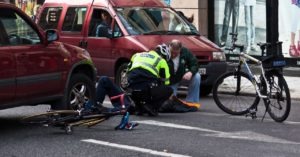Protect Your Rights By Following These Steps

Accidents happen even to the best of riders. When it does happen, you’ll be better off if you have an action plan in place. Getting thrown off of your bike can cause you physical and mental harm. You might not be able to think clearly immediately after a bike accident. That’s why you need to think about the inevitable ahead of time, so you don’t need to think when it happens – you can just take steps. The first step you should take is to get yourself and the bike off the road. Oncoming traffic might still be a threat to your safety. The bike in the road might lead to a vehicle accident, so you want to get that out of the middle of the road too. Now, when you get into an accident, a trusted road bike accident lawyer in Los Angeles recommends five things you should do:
- Take a Moment
After a bike accident or any other kind of accident for that matter, your body will likely release adrenalin. This is nature’s way of giving you temporary energy to get yourself out of harm’s way, but the adrenaline rush can make you immune to pain. You could have an injury from the bike accident and not feel a thing, thanks to the adrenaline rushing through your body. In general, don’t just hop back on the bike and take off after an accident. Take a moment and assess your condition. Move your hands down and around your face, head and body, feeling for any wet spots. It sounds bad, but what you’re feeling for is blood from an injury. Next, step lightly and see if you can stand and walk properly. If not, you could have a sprain or broken bone. Move your head back and forth and up and down. Move your arms around. Does everything work properly? If not, seek immediate medical attention. - Get First Aid
If you find out that there’s a problem of any kind, get medical help and contact an attorney for legal representation. You need someone to give you first aid unless you’re alone and have to fend for yourself. First off, you’ll want to stop any bleeding that you may have. Next, you’ll want to immobilize any breaks or sprains you may have gotten. This may mean getting off your feet. If possible, sit far off the road and up an incline so drivers will be able to see you. If someone stops to help, ask them to call for emergency responders, or call them yourself if you have your cell phone. You should also call your attorney as soon as you feel able. Under no circumstances should you just go home, ignore your injuries and hope they go away. It is recommended that you get a written doctor’s report on your injuries as soon as possible. - Check For Concussion
One of the most insidious injuries you may get after a bike accident is a concussion. A concussion may not feel like anything, but it can leave you with impaired cognitive ability in the short or long term. A Los Angeles personal injury lawyer can help you file a claim if necessary. First, check to see how your helmet is. If it’s damaged, that means you hit your head, even if you didn’t realize it. You can’t diagnose a concussion by yourself, so it’s important to tell the emergency responders that you think you hit your head. They’ll be able to do what’s needed with that information. - Check Your Bike Wheels
Your bike wheels have to be completely undamaged for it to be safe for you to get back on your bike. If there’s any wobbling or broken spokes, or a bent wheel frame, you won’t be able to ride anywhere. Check the tire pressure, too. You might have incurred a slow leak and you don’t want to get halfway to where you’re going only to be stranded with a flat tire. - Check the Other Components
Other important things to check on your bike include the brakes and pedals. Obviously, you need the brakes to be in fully functioning order. Typically, if you have a bike accident, the brakes will have been skewed. One brake pad may be rubbing against the wheel. Check the brake line to ensure that the cord hasn’t been severed, too. Inspect the pedals to make sure they’re attached securely and that they rotate freely. If any of these things are disjointed or out of order, you won’t be able to ride the bike until you have it repaired or replaced.
Finally, since bike accidents are so common, it pays to be prepared. Install a bike rack and cargo bag to store some emergency supplies. You should always keep a supply of bandages, antiseptic, cotton wool in the cargo bag. In addition, keep an extra water bottle in there for washing wounds. The next time you have a bike accident, you’ll be fully prepared!

